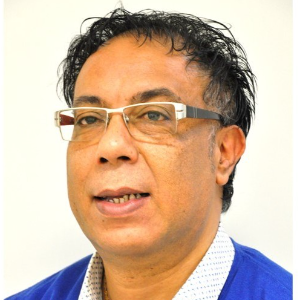Title : Assessment of skin tension by non - contact palpation and multi-scale imaging: Effect of age and cosmetics
Abstract:
Changes of dermal collagen and elastin content are characteristic for skin aging as well as for pathological skin conditions. The formation of lines and wrinkles in light-exposed areas throughout the body, such as the face, throat and hands are a wellknown sign of skin aging. Both intrinsic and extrinsic factors influence lines and wrinkles.
When analysing the mechanics of skin in vivo, a significant property is its natural tension. Discovered by Dupuytren, and mapped by Langer, the non-uniform skin tension lines exist from birth to old age. Langer has identified these lines by puncturing the skin with a circular device. The wounds then assume an elliptical shape and by joining the major axes of the ellipses a system of lines can be drawn, some authors propose other methods to obtain these lines, such as wrinkling of the skin by Borges. Skin resistance to traction predominates in the Langer’s lines direction and varies with body site. On all body sites, the skin tension is greater in the direction of Langer’s lines.
The diagnosis of the condition of cutaneous tension is measured in this work by a device of palpation without contact. The developed device is based on measuring surface waves propagation initiated by a controlled air stream stimulus. Using solenoid valves we adjust the flow output duration and general form over the output pipe of 2 mm inner diameter, pressure out of 2 bar and 3ms of pulse duration. The magnitude of the strain response at the impact point by the air stream is measured by a laser displacement sensor. The laser line consists of 800 sensors over a length of 7 millimeters and can be positioned in different directions to identify the anisotropy of the propagation velocity of the elastic wave.
In our research work in skin bioengineering, different approaches combining skin tension diagnosis, multi-scale imaging (OCT, Biphotonic confocal microscopy and imaging of surface topography) have been developed both in-vivo, on biopsy and on artificial skins derived from tissue engineering. In-vivo studies have identified the loss of tension of elastin and collagen fibers during aging and gender effect. Palpation of the state of mechanical firmness and imaging of the face was studied for four weeks, with measurements of elasticity in three directions at the end of each week. Results show significant increase in facial firmness of 30 Caucasian women



